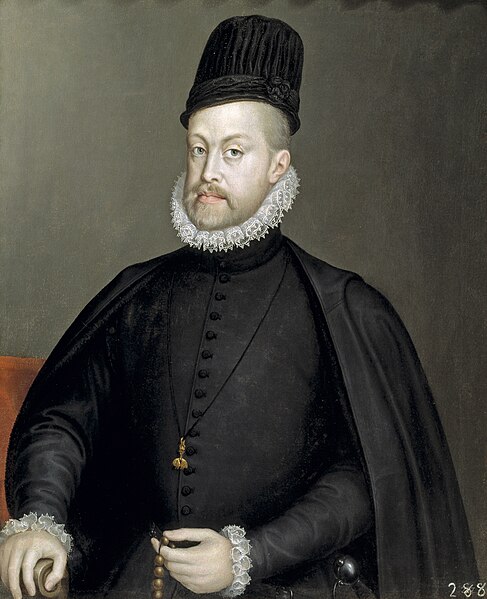The
Spanish Empire
After the
Catholic monarchs, the territories ruled by the new king, Carlos I, expanded. In
the early 16th, the empire included many territories in Europe
(Spain, the Netherlands, part of Italy, areas in central Europe), islands in
the Mediterranean and Atlantic, The American Colonies, territories in Africa
and Asia. Apart from this, in 1580 the Kingdom of Portugal came under Spanish rule, adding all its territories to the Empire.
Carlos I
He was the
grandson of the Catholic Monarchs. He was not educated in Castilla but in the
Netherlands. He became the king of Spain in 1516. He faced many problems during his reign:
Internal
conflicts: when Carlos became king, he brought many foreign councillors to help him. People did not like this. There were two revolts asking the
king to choose Castilian councillors and better living conditions:
- 1520: Revuelta de las Comunidades de Castilla
- 1520: Revuelta de las Germanías
International
level: Carlos I fought in different wars against:
- France: Spain´s main rival for power in Europe.
- Turks: they wanted to control the Mediterranean making difficult for Spain to trade with Ital
- Lutherans: a new movement in the Catholic Church. They didn´t want to accept the pope (Papa). He couldn´t slow the expansion of this movement.

Felipe
II

He was the
son of Carlos I. He became ruler of the largest empire of his time in 1556.
- He defeated France but the conflict reappeared at the end of his reign.
- He defeated the Turks in the Batalla de Lepanto.
- The Netherlands became his major problem: the Northern provinces declared independence from Spanish rule. Felipe did not accept this. This began a long and costly war. England helped the Netherlanders and Felipe sent the Spanish Armada against them. Spain was defeated in 1588.
All this
wars were very expensive. The Spanish population became poorer and the prices of certain
products went up. At the same time, the metals coming from America went
down.
Felipe II
died in 1598, leaving a weak and poor empire that was breaking up.
The Fragmentation
of the Empire:
After
Felipe II, we had Felipe III, Felipe IV and Carlos II as kings.
In this new
century, the 17th century, we have to talk about the validos or favourites.
The validos were ministers and friends with
the confidence of the king. They governed in its name. Some of them had a lot
of power, such as the Duque de Lerma and the Conde-duque de Olivares. They had
so much of the king´s power that this caused revolts of protest in Portugal,
Cataluña and Italy. This ended with the independence of Portugal from Spain, in
1640.
The war in
the Netherlands continued until 1648, when Spain recognized their independence.



The war
of succession
In 1700, Carlos
II died without leaving a successor. There were two candidates:
- Archiduque Carlos: German
- Felipe d´Anjou: French
Each
European country supported one or other depending on its own interests. Spain
was also divided: Castilla supported Felipe whilst Aragon supported Carlos.
This started the War of succession which was not only international but also a
civil war. It ended in 1713 with the
signing of the Treaty of Utrecht, recognizing the triumph of Felipe, who became
King Felipe V.





There is a lot to coooopyyyyy!!!!!!!!!!!!!!!!!!!!!
ReplyDelete